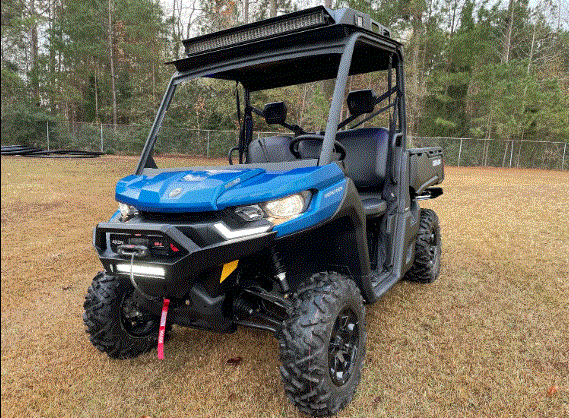What is UTV Financing?
UTV financing refers to the process of securing a loan or lease to purchase a Utility Task Vehicle. Much like car loans, UTV financing options allow buyers to spread the cost of their purchase over time by making monthly payments, usually with added interest. This helps you manage the large upfront cost of a UTV, especially if you’re on a budget.
Why Should You Consider UTV Financing?
If you’re wondering whether UTV financing is right for you, here are some key reasons to consider it:
- Affordable Monthly Payments: Instead of paying a large lump sum, you can spread the cost over several months or years, making it easier to budget.
- Access to Higher-End Models: Financing allows you to afford a more advanced UTV that you may not be able to buy outright.
- Preserve Savings: By financing, you can keep your savings intact for emergencies or other investments.
Types of UTV Financing Options
There are several ways to finance a UTV. Each comes with its own benefits and drawbacks, so it’s important to understand the differences.
1. Dealership Financing
Many UTV dealerships offer financing plans directly to their customers. This type of financing is convenient because it’s arranged at the point of sale, and dealerships often have relationships with lenders that specialize in UTV loans.
- Pros: Quick and easy approval, competitive interest rates during promotional periods.
- Cons: Limited loan term options, may require a larger down payment.
2. Personal Loans
Another option is taking out a personal loan from a bank or credit union. These loans are not tied to the vehicle, meaning the UTV won’t serve as collateral.
- Pros: Flexible loan terms, no need to use UTV as collateral.
- Cons: Interest rates may be higher than specialized UTV loans.
3. Manufacturer Financing
Some UTV manufacturers offer special financing deals through their financing arms. These promotions often come with low interest rates or even zero-percent financing for a set period.
- Pros: Low-interest or zero-interest offers, typically require a smaller down payment.
- Cons: Limited to certain models, must have excellent credit to qualify.
4. Credit Cards
Although not a traditional financing method, some buyers may opt to purchase their UTV using a credit card with a high enough limit.
- Pros: Easy to arrange if you already have a card.
- Cons: Very high-interest rates, not ideal for large purchases.
How to Qualify for UTV Financing
Before you can secure UTV financing, lenders will assess your ability to repay the loan. Here’s what they typically look for:
1. Credit Score
Your credit score plays a significant role in determining whether you qualify for a loan and what interest rate you’ll receive. A higher credit score often leads to better loan terms.
- Excellent Credit (700+): Best interest rates and low down payment.
- Good Credit (650-699): Reasonable interest rates but might require a larger down payment.
- Fair Credit (600-649): Higher interest rates, larger down payments, or stricter loan terms.
- Poor Credit (<600): Limited options, may require a co-signer or higher down payment.
2. Income Verification
Lenders want to make sure you can afford your monthly payments. You’ll need to provide proof of income through pay stubs, tax returns, or bank statements.
3. Down Payment
Many UTV financing options will require a down payment. This amount typically ranges between 10% to 20% of the UTV’s price but can vary depending on the lender.
4. Debt-to-Income Ratio
Your debt-to-income ratio (DTI) compares your monthly debt payments to your gross monthly income. Lenders prefer a lower DTI, typically under 43%, but requirements may vary.
Tips for Getting the Best UTV Financing Rates
To get the best rates and terms on your UTV financing, here are a few key tips:
1. Improve Your Credit Score
If your credit score is less than ideal, take time to improve it before applying for UTV financing. Pay off existing debt, make on-time payments, and reduce credit card balances to help boost your score.
2. Shop Around
Different lenders offer different terms. It’s important to shop around for the best loan terms and interest rates. Check with dealerships, banks, and credit unions to find the most favorable offer.
3. Make a Larger Down Payment
The more you put down upfront, the lower your monthly payments will be, and the less interest you’ll pay over the life of the loan. A larger down payment can also help you qualify for a better interest rate.
4. Negotiate Terms
Don’t be afraid to negotiate the loan terms, especially if you’re financing through a dealership. You might be able to secure a lower interest rate, extend the loan term, or reduce fees.
What You Need to Know About UTV Loan Terms
Loan terms can vary greatly depending on the lender and your financial situation. Common loan terms range from 24 to 72 months. Here’s how different loan terms impact your payments:
| Loan Term | Monthly Payment | Interest Paid |
|---|---|---|
| 24 months | High | Low |
| 36 months | Moderate | Moderate |
| 48 months | Moderate | Higher |
| 72 months | Low | High |
Shorter loan terms come with higher monthly payments but save you money on interest. Longer terms lower your monthly payments but result in higher overall interest costs.
Conclusion
UTV financing makes it possible for more people to own these versatile and powerful vehicles. By understanding the different financing options, qualification requirements, and how to secure the best rates, you can make a sound financial decision that suits your needs. Remember to shop around for the best loan terms, improve your credit score if needed, and always read the fine print before signing on the dotted line.
Frequently Asked Questions About UTV Financing
1. Can I Finance a Used UTV?
Yes, many lenders allow financing for both new and used UTVs. However, interest rates on used vehicles may be higher, and loan terms may be shorter.
2. What is a Good Interest Rate for UTV Financing?
Interest rates can range from as low as 0% (for promotional offers) to as high as 15% or more, depending on your credit score and the lender.
3. Do I Need Insurance to Finance a UTV?
Most lenders will require you to have UTV insurance as part of the financing agreement, similar to how car loans require auto insurance.
4. Can I Pay Off My UTV Loan Early?
Most lenders allow early repayment of loans, but you should check for any prepayment penalties in your loan agreement.
5. How Much Should I Put Down on a UTV?
A down payment of 10% to 20% is typical, but putting more down can lower your monthly payments and reduce the total interest you pay.
6. Is Financing the Best Option for Me?
If you need to preserve cash or want to afford a more expensive UTV, financing can be a good option. However, if you can afford to pay cash upfront, you’ll save money on interest.







